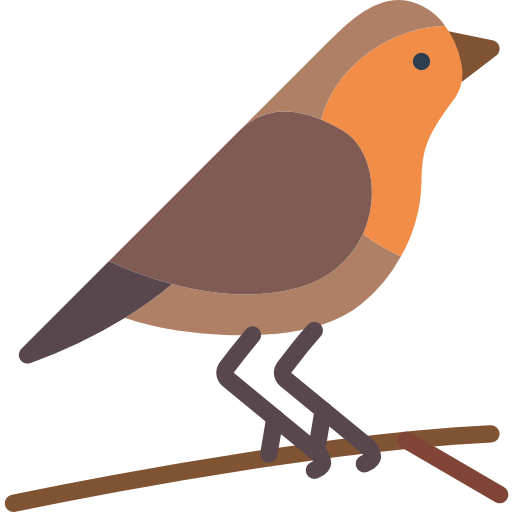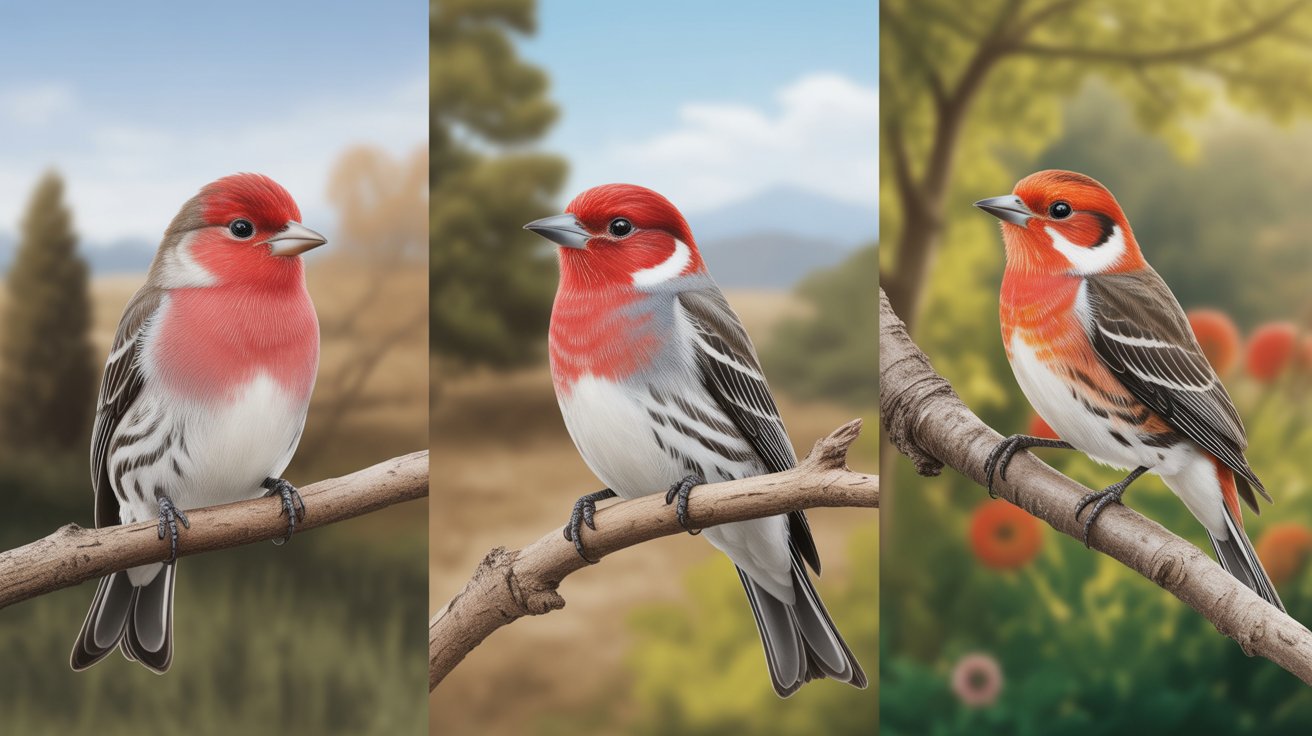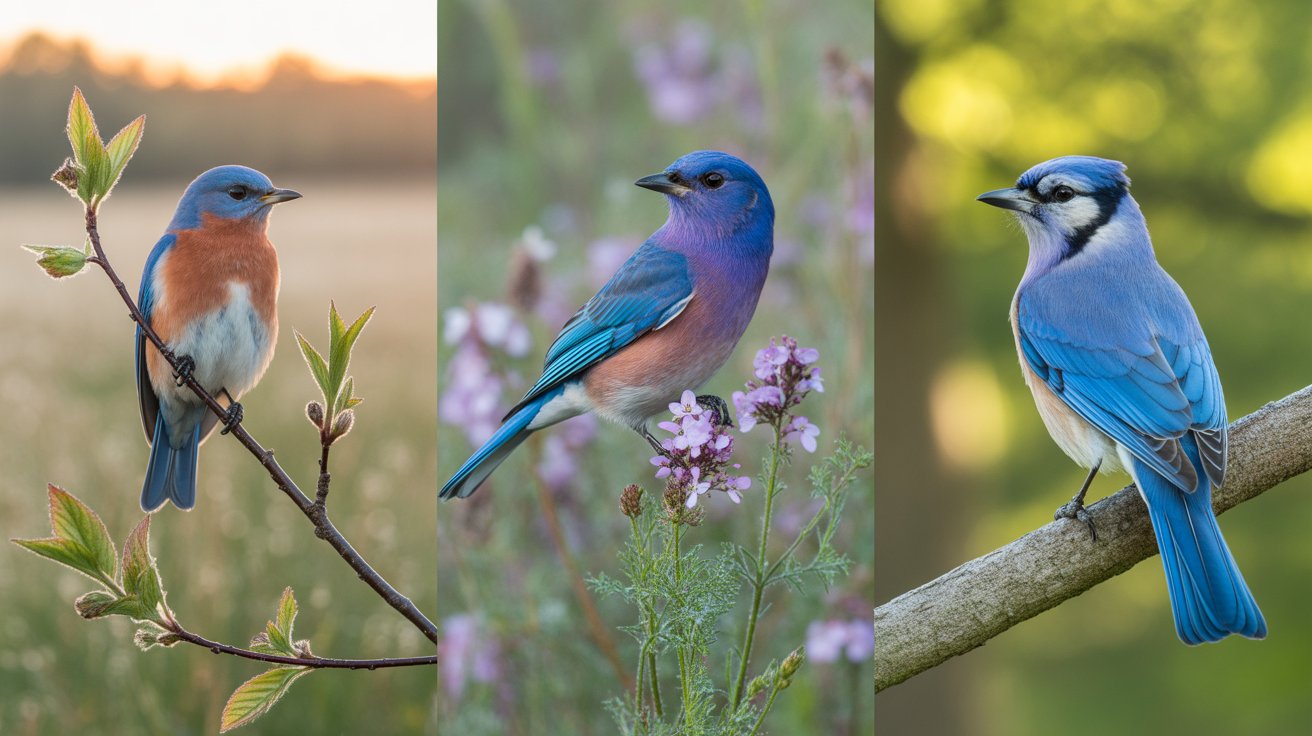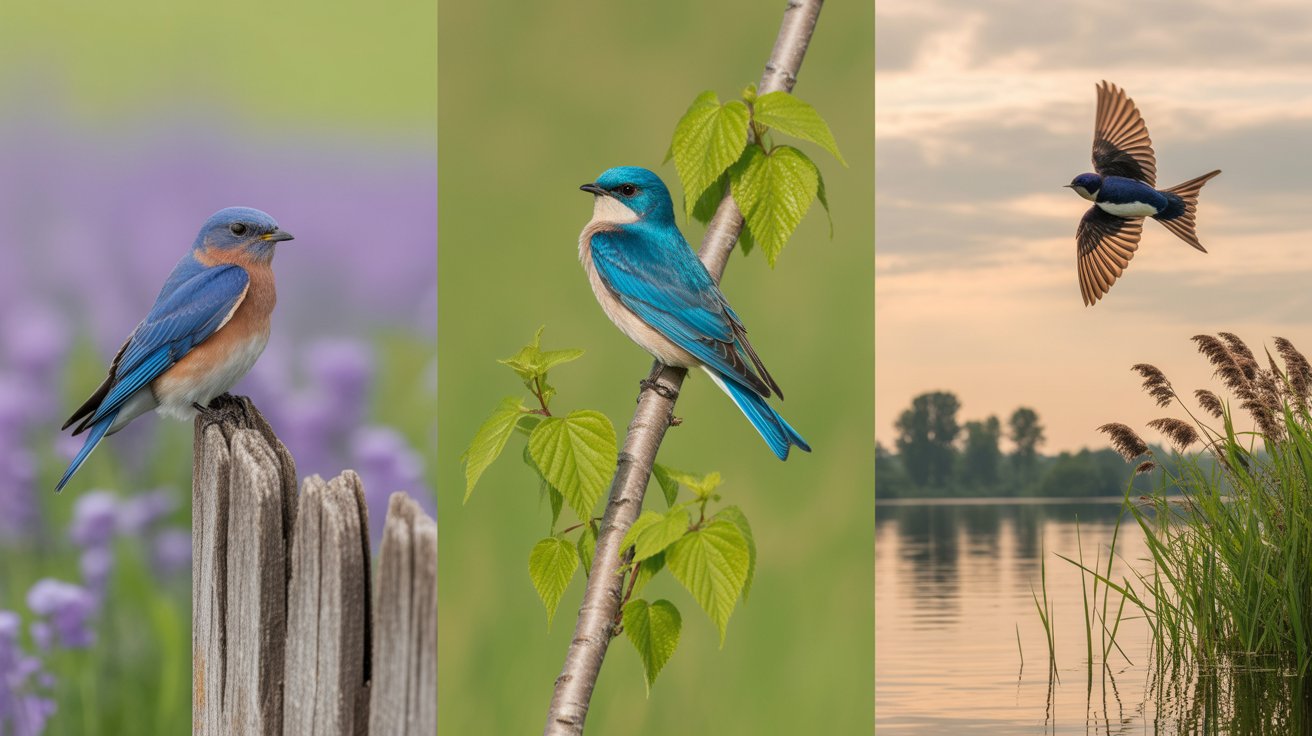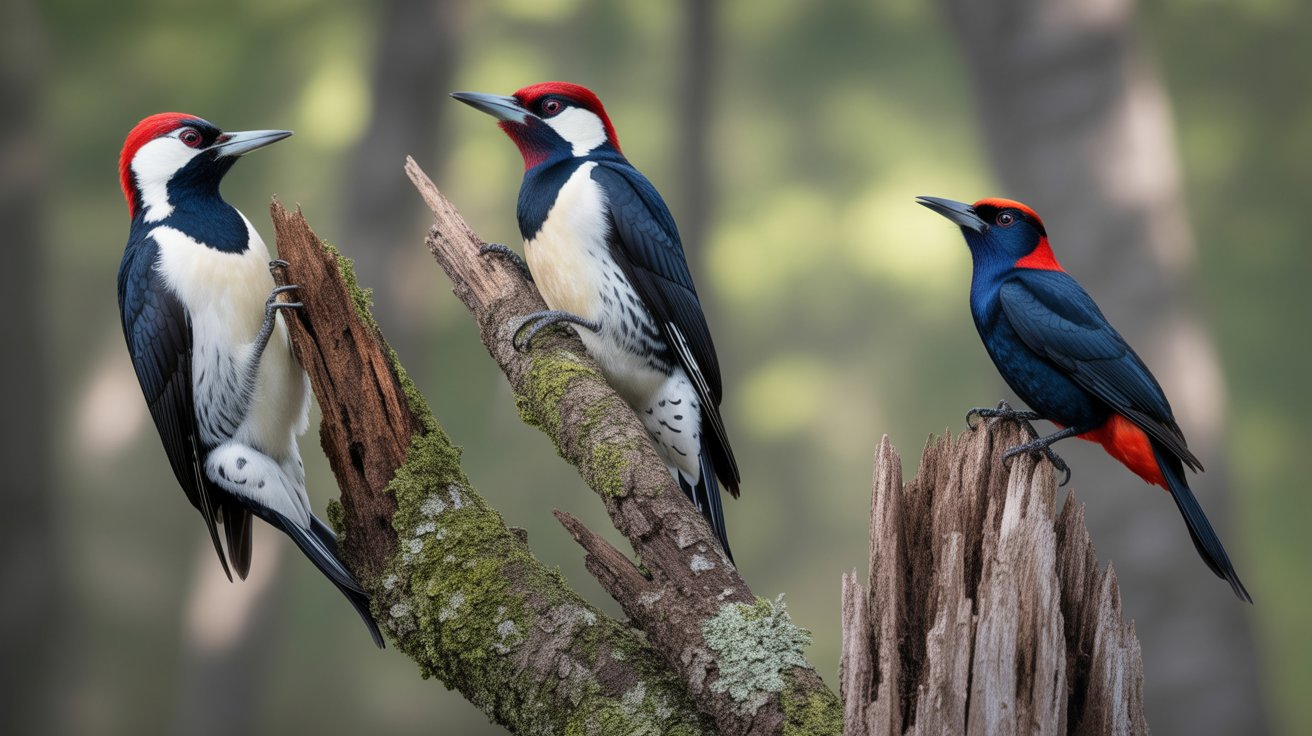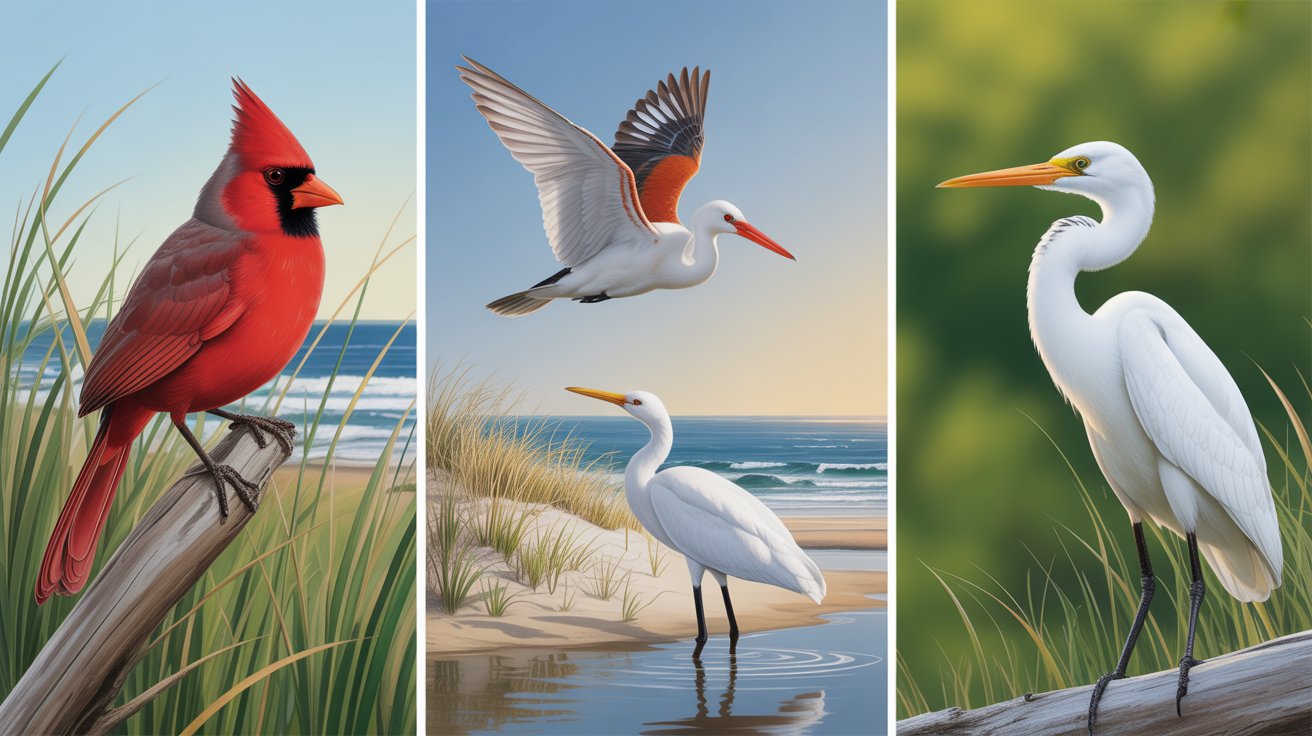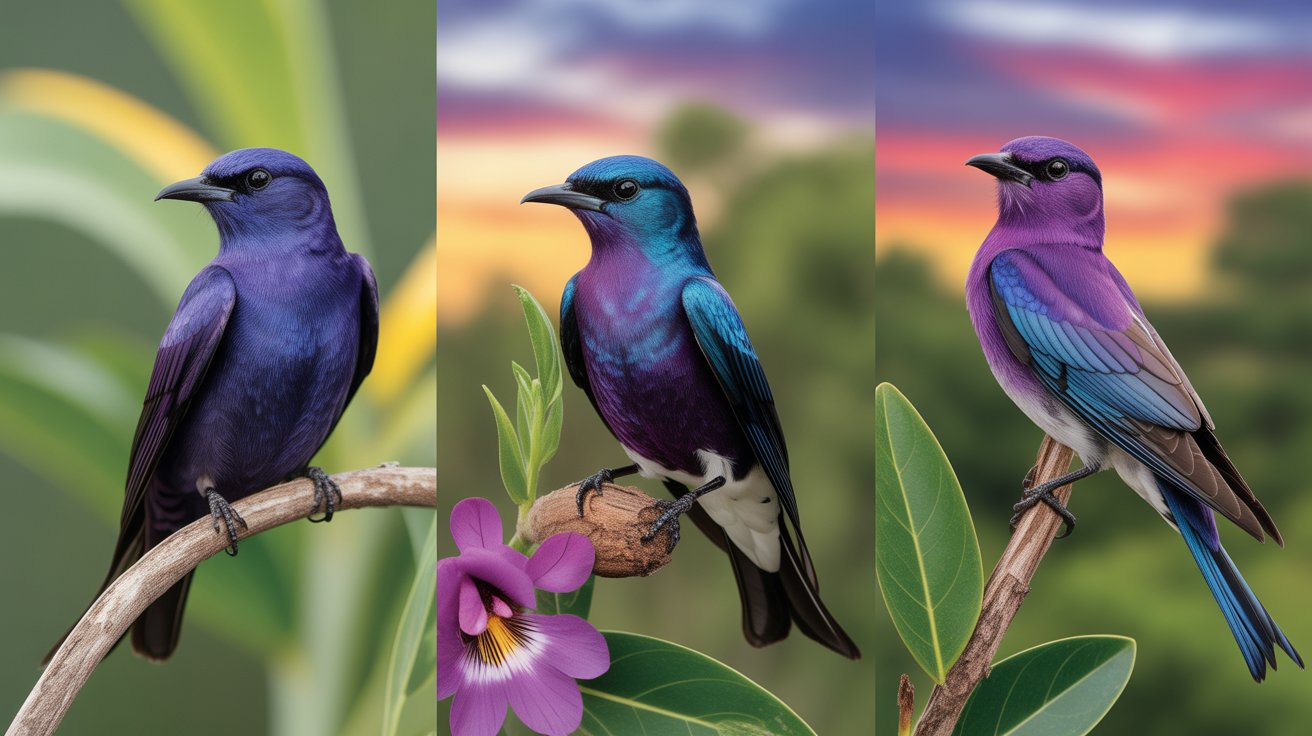If you’re a bird lover or simply curious about the wonders of nature, birds with colorful beaks are some of the most eye-catching creatures you’ll ever encounter. Their vibrant bills aren’t just for show—they serve essential purposes in communication, feeding, and attracting mates. And let’s face it, they’re downright fascinating to look at!
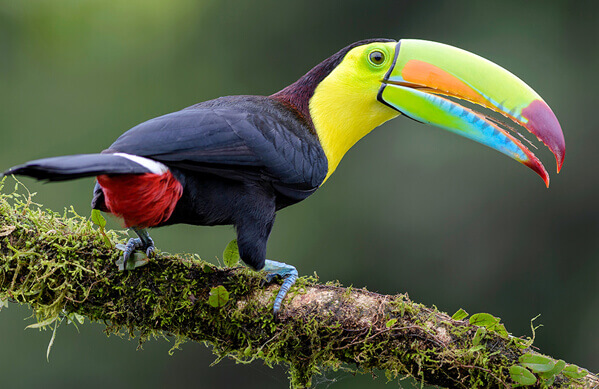
In this article, you’ll discover a stunning variety of birds with multicolored beaks. From tropical rainforests to coastal regions, these feathered wonders flaunt beaks in shades of red, blue, green, yellow, and even rainbow combinations. Their beak colors are often a clue to their personality, diet, or mating habits.
What makes these birds even more intriguing is the science behind their beak coloration. Pigments and structural coloration work together to create hues that stand out in the wild. Whether you’re a backyard birder or just building your bird knowledge, learning about these colorful-beaked birds will leave you with a greater appreciation of nature’s palette.
So grab your binoculars—or just scroll on—and let’s explore 15+ birds with the most dazzling beaks you’ll ever see!
Contents
- 1. Keel-Billed Toucan
- 2. Atlantic Puffin
- 3. Toco Toucan
- 4. Rhinoceros Hornbill
- 5. Southern Ground Hornbill
- 6. American White Ibis
- 7. Rainbow Lorikeet
- 8. Black Skimmer
- 9. Northern Cardinal
- 10. Great Hornbill
- 11. Mandarin Duck
- 12. Red-Legged Honeycreeper
- 13. Inca Tern
- 14. Eclectus Parrot
- 15. King Eider
- 16. Channel-Billed Toucan
- FAQs
- Conclusion
1. Keel-Billed Toucan
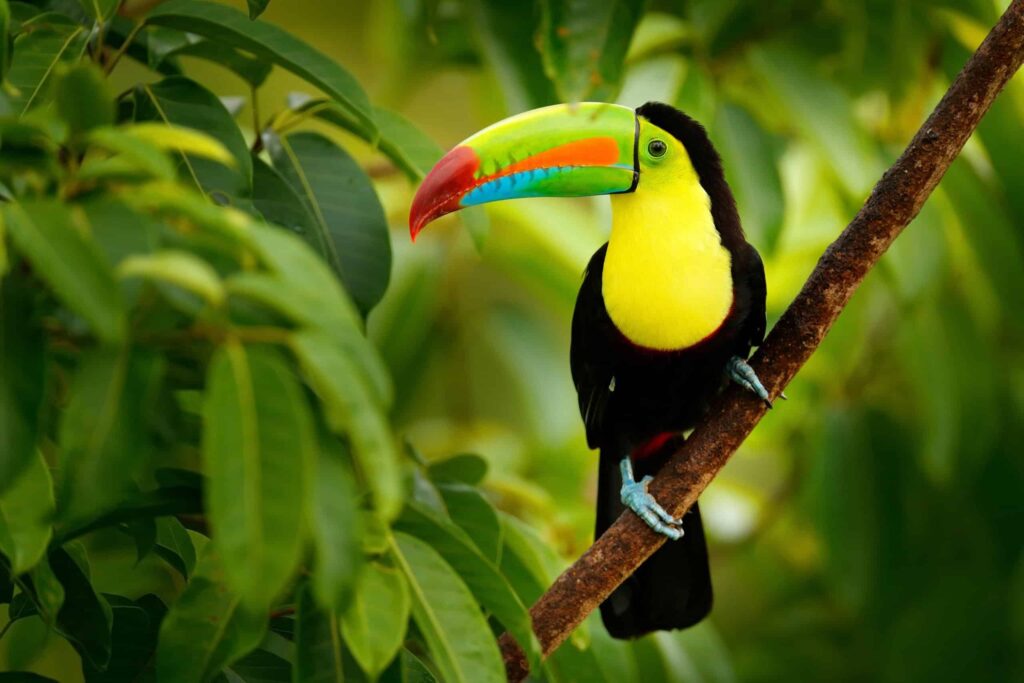
The Keel-Billed Toucan is arguably the poster bird for colorful beaks. Its bill is a stunning mix of green, red, blue, and orange—so bright it almost looks painted. Found in the tropical forests of Central America, this bird uses its oversized beak to pick fruits and charm potential mates.
- Scientific Name: Ramphastos sulfuratus
- Wingspan: 109–152 cm
- Length: 42–55 cm
- Weight: 380–500 g
The beak may look heavy, but it’s made of a light protein called keratin and a foam-like interior, making it surprisingly light. This bird is also known for its frog-like croaks, which echo through the canopy. If you ever spot one, you’re witnessing a true masterpiece of avian evolution.
2. Atlantic Puffin
The Atlantic Puffin sports a bright orange and yellow beak during the breeding season, creating a stark contrast to its black-and-white body. This small seabird, sometimes called the “clown of the sea,” is a favorite among birdwatchers in the North Atlantic.
- Scientific Name: Fratercula arctica
- Wingspan: 47–63 cm
- Length: 26–29 cm
- Weight: 320–500 g
The puffin’s beak dulls after breeding season, which is one of nature’s ways of showing off when it matters most. These birds are excellent swimmers, using their wings like flippers underwater. Their colorful beaks are also used for courtship rituals, where two puffins may “bill” each other in affection.
3. Toco Toucan
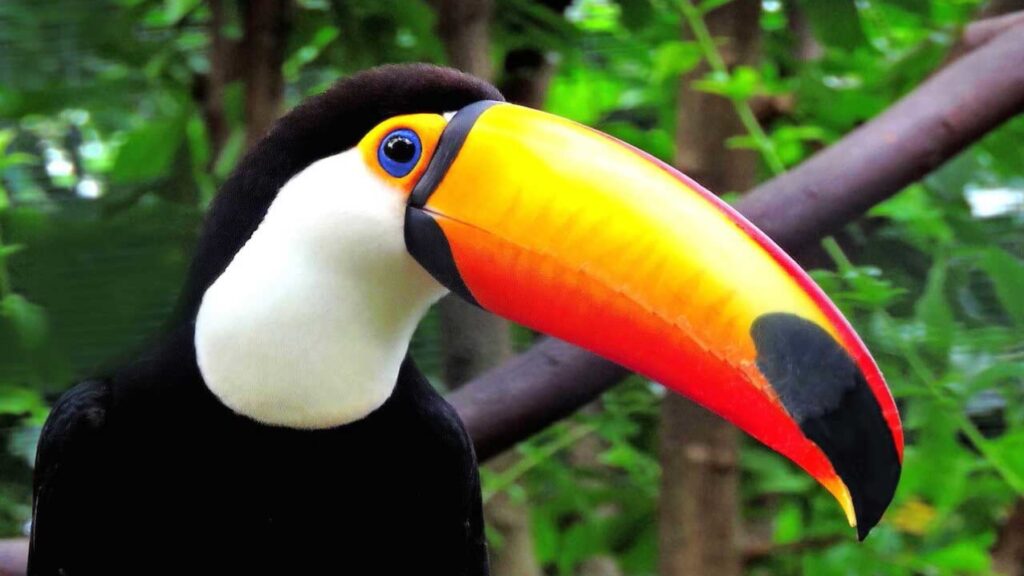
Toco Toucans are iconic for their massive, fiery orange bills tipped in black. Native to South America, especially Brazil, their beaks can grow up to 19 cm—about a third of their body length.
- Scientific Name: Ramphastos toco
- Wingspan: 60 cm
- Length: 55–65 cm
- Weight: 500–876 g
Despite its size, the beak is light and helps regulate body temperature. It’s also a powerful tool for reaching fruit high up in trees. Their beaks may look cartoonish, but in real life, they’re nothing short of awe-inspiring.
4. Rhinoceros Hornbill
This dramatic bird is named after its prominent, horn-like casque sitting on top of its red-orange and yellow beak. Found in Southeast Asian rainforests, the Rhinoceros Hornbill is a cultural icon in regions like Malaysia and Borneo.
- Scientific Name: Buceros rhinoceros
- Wingspan: 152 cm
- Length: 90–120 cm
- Weight: 2–3 kg
The colorful casque is hollow and thought to amplify their booming calls. Their beaks also help in fruit plucking and nest maintenance. If you’re ever hiking through tropical jungles, you might just hear their deep honking sounds before you see their beaks glow through the foliage.
5. Southern Ground Hornbill
Not all colorful beaks are neon; some are striking due to their rich contrast. The Southern Ground Hornbill has a long, dark beak with red facial and throat skin that gives it a dramatic appearance.
- Scientific Name: Bucorvus leadbeateri
- Wingspan: 120–180 cm
- Length: 90–130 cm
- Weight: 3–6 kg
These birds roam the savannas of sub-Saharan Africa, hunting small prey. The beak is used like a tool, capable of cracking bones and digging. It’s a mix of power and style you don’t want to miss.
6. American White Ibis
This elegant wader features a long, curved, bright orange-red bill that stands out against its all-white plumage. The beak’s shape and color are both ideal for its marshy lifestyle.
- Scientific Name: Eudocimus albus
- Wingspan: 90–105 cm
- Length: 56–66 cm
- Weight: 700–1050 g
Found in wetlands across the southeastern U.S. and Central America, the ibis uses its beak to probe for insects and crustaceans. You’ll often spot them in groups, sweeping their colorful beaks through the water.
7. Rainbow Lorikeet
True to its name, the Rainbow Lorikeet boasts vibrant plumage and a brilliant orange beak that perfectly complements its multicolored feathers.
- Scientific Name: Trichoglossus moluccanus
- Wingspan: 17 cm
- Length: 25–30 cm
- Weight: 75–160 g
Native to Australia, these nectar-feeding parrots are noisy, social, and hard to miss. Their beaks help them feed on fruits and flowers, and they’re often seen in bustling flocks.
8. Black Skimmer
This coastal bird has a striking bicolor beak—bright orange at the base and black at the tip. Even more interesting, the lower mandible is longer than the upper!
- Scientific Name: Rynchops niger
- Wingspan: 107–127 cm
- Length: 40–50 cm
- Weight: 250–400 g
Black Skimmers glide just above the water, dragging their lower mandible to scoop up fish. Their unusual beak makes them one of the most uniquely equipped birds in North America.
9. Northern Cardinal
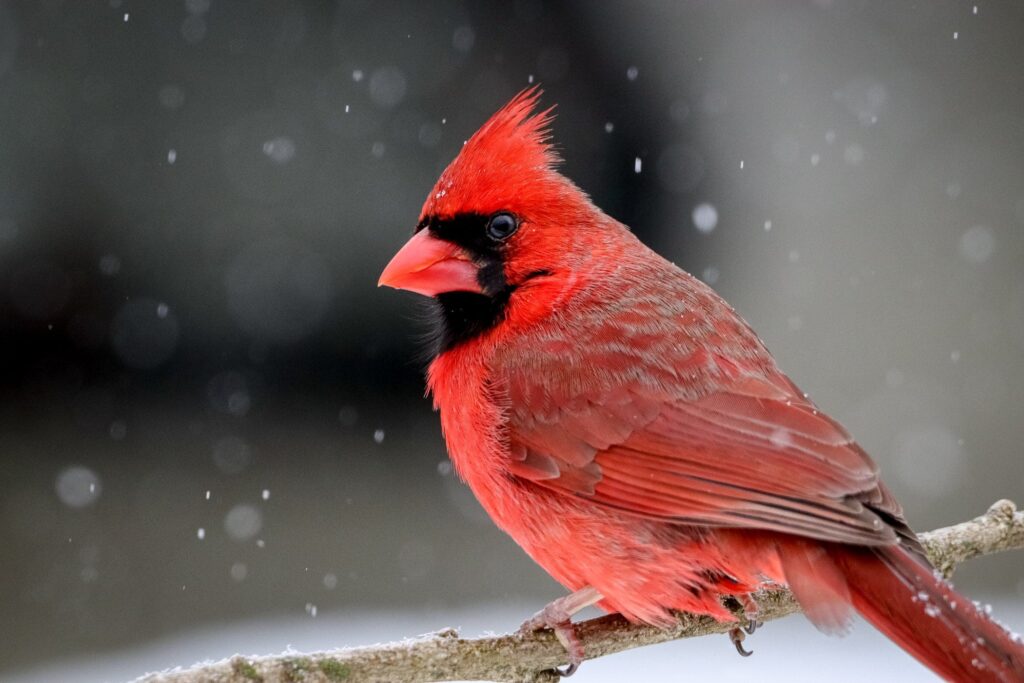
The Northern Cardinal is known for its bold red plumage, but its beak is just as noteworthy—a vivid coral-orange color that contrasts beautifully with its feathers.
- Scientific Name: Cardinalis cardinalis
- Wingspan: 25–31 cm
- Length: 21–23.5 cm
- Weight: 42–48 g
These birds are common in North America and are frequent backyard visitors. Their short, thick beaks are perfect for cracking seeds, and the color intensifies during the breeding season, playing a role in attracting mates.
10. Great Hornbill
The Great Hornbill flaunts a huge yellow beak topped with a black-and-yellow casque. This regal bird is found in India and Southeast Asia and is often seen flying across the forest canopy.
- Scientific Name: Buceros bicornis
- Wingspan: 150–180 cm
- Length: 95–120 cm
- Weight: 2.15–4 kg
Their beaks look heavy, but they’re relatively light and used for feeding on fruits and small animals. Their striking bill also plays a key role in social displays and territorial calls.
11. Mandarin Duck
The male Mandarin Duck is a living work of art, with a reddish-pink beak that adds flair to its already multicolored body. It’s often seen gliding gracefully across ponds in East Asia and even in parts of Europe.
- Scientific Name: Aix galericulata
- Wingspan: 65–75 cm
- Length: 41–49 cm
- Weight: 500–700 g
The beak is not just for beauty—it helps in foraging aquatic plants and small fish. Their courtship displays are among the most extravagant in the bird world.
12. Red-Legged Honeycreeper
This tropical gem from Central and South America features a deep black beak that stands out against its vivid electric-blue plumage and red legs.
- Scientific Name: Cyanerpes cyaneus
- Wingspan: 19–21 cm
- Length: 12–13 cm
- Weight: 12–14 g
Their slim, slightly curved beaks are specialized for sipping nectar and consuming insects. Though not multicolored, the beak’s deep shade adds to the bird’s bold contrast.
13. Inca Tern
The Inca Tern has a crimson-red beak that shines brightly against its smoky gray feathers and white facial mustache. This Peruvian coast native is both classy and quirky.
- Scientific Name: Larosterna inca
- Wingspan: 70–76 cm
- Length: 39–42 cm
- Weight: 180–210 g
These birds feed on small fish and are agile flyers. The bright beak is part of their breeding charm and helps them stand out in rocky coastal colonies.
14. Eclectus Parrot
The male Eclectus Parrot has a unique orange and yellow beak that contrasts beautifully with its emerald green body, while females have a different appearance altogether.
- Scientific Name: Eclectus roratus
- Wingspan: 40–48 cm
- Length: 35–40 cm
- Weight: 380–550 g
Their strong beaks help in cracking nuts and fruit shells. The color of the beak is a useful gender marker, especially helpful for breeders and enthusiasts.
15. King Eider
The male King Eider boasts a bright orange frontal shield on its beak, making it one of the most recognizable sea ducks in Arctic regions.
- Scientific Name: Somateria spectabilis
- Wingspan: 86–102 cm
- Length: 52–63 cm
- Weight: 1.6–2.2 kg
This beak ornamentation helps in mating displays. They dive for mollusks and crustaceans in frigid waters, and their beak’s tough structure aids in crushing shells.
16. Channel-Billed Toucan
With a large black beak accented by striking orange lines near the base, the Channel-Billed Toucan is another beauty from the Amazon Basin.
- Scientific Name: Ramphastos vitellinus
- Wingspan: 95–105 cm
- Length: 48–57 cm
- Weight: 360–550 g
The beak may seem oversized, but it’s ideal for reaching distant fruits and flicking seeds. Their loud, croaking calls often echo through rainforest canopies.
FAQs
1. Why do some birds have colorful beaks?
Colorful beaks often serve purposes like attracting mates, signaling health, or aiding in species recognition.
2. Do bird beak colors change over time?
Yes, many birds have seasonal color changes in their beaks, especially during breeding periods.
3. Are colorful beaks more common in tropical birds?
Absolutely. Tropical environments favor bright coloration due to dense vegetation and visual communication needs.
4. Are colorful beaks found in both male and female birds?
In many species, only males have vivid beaks, but some species show similar coloration in both sexes.
5. What are bird beaks made of?
Bird beaks are made of keratin (the same protein as human nails) and have a lightweight bony core.
Conclusion
Now that you’ve seen these 15+ birds with some of the most vibrant beaks in the avian world, it’s easy to understand why nature enthusiasts and birders find them so mesmerizing. Whether it’s the rainbow bill of the Keel-Billed Toucan or the fiery red beak of the Northern Cardinal, these birds demonstrate that evolution doesn’t just work—it dazzles.
These colorful beaks aren’t just for beauty; they play critical roles in survival, feeding, mating, and social signaling. Some help attract mates, others are built to dig or snatch prey, and a few even regulate body temperature. Each beak tells a unique story.
So the next time you’re out in the wild, at a bird sanctuary, or even just flipping through a bird guide, keep your eyes peeled for those vibrant bills. They might be the key to identifying some of the most fascinating and flamboyant species out there.
Happy birding!
